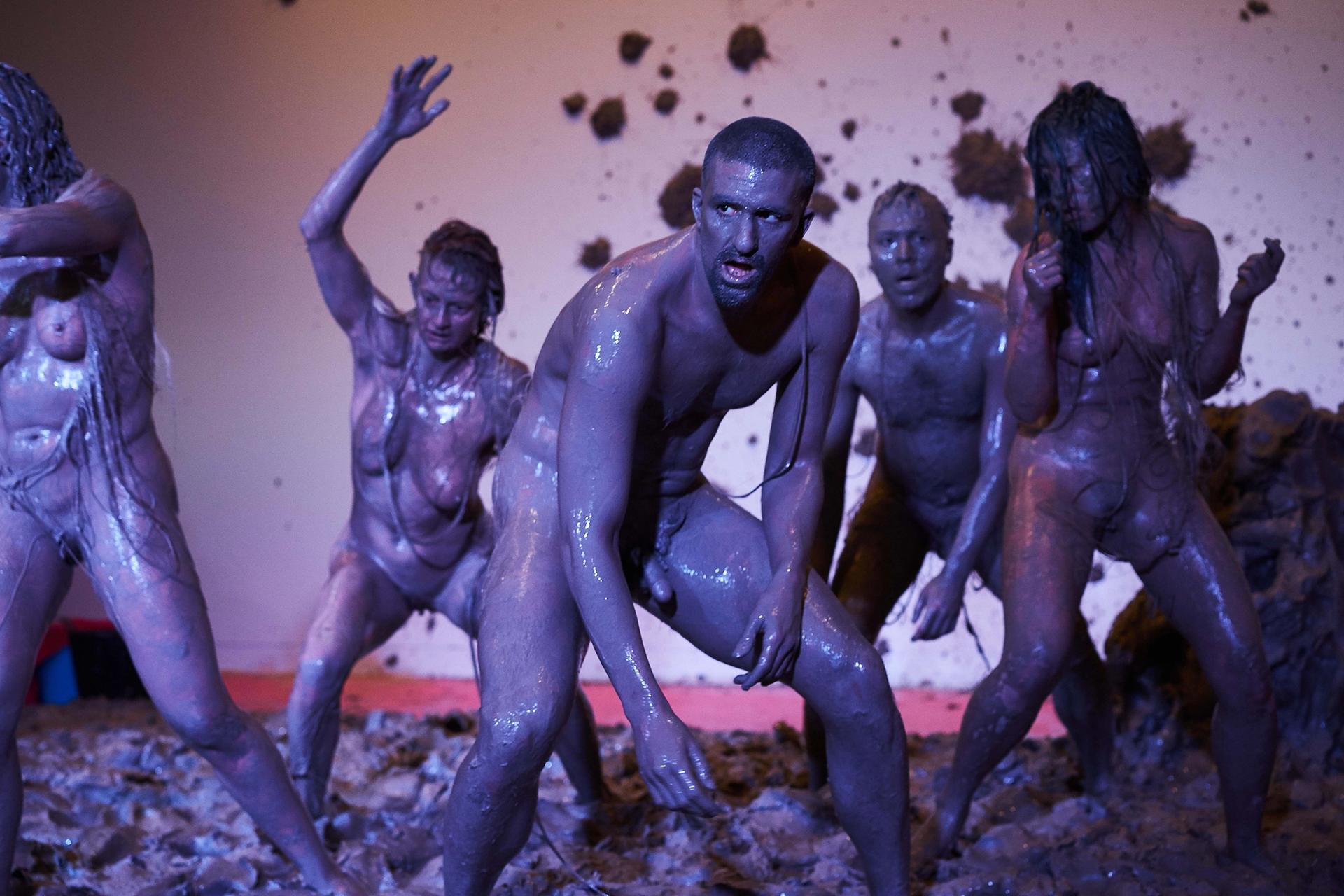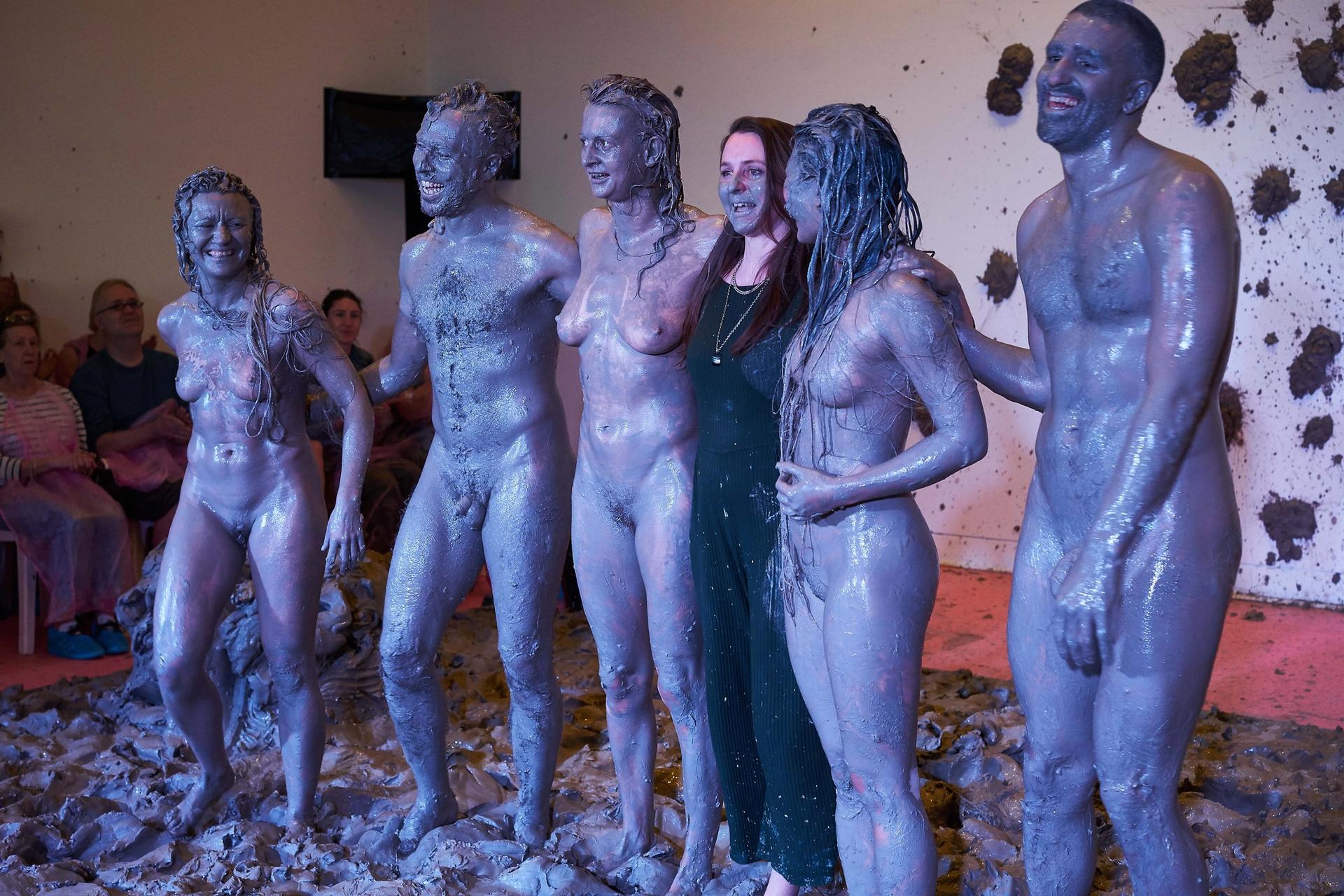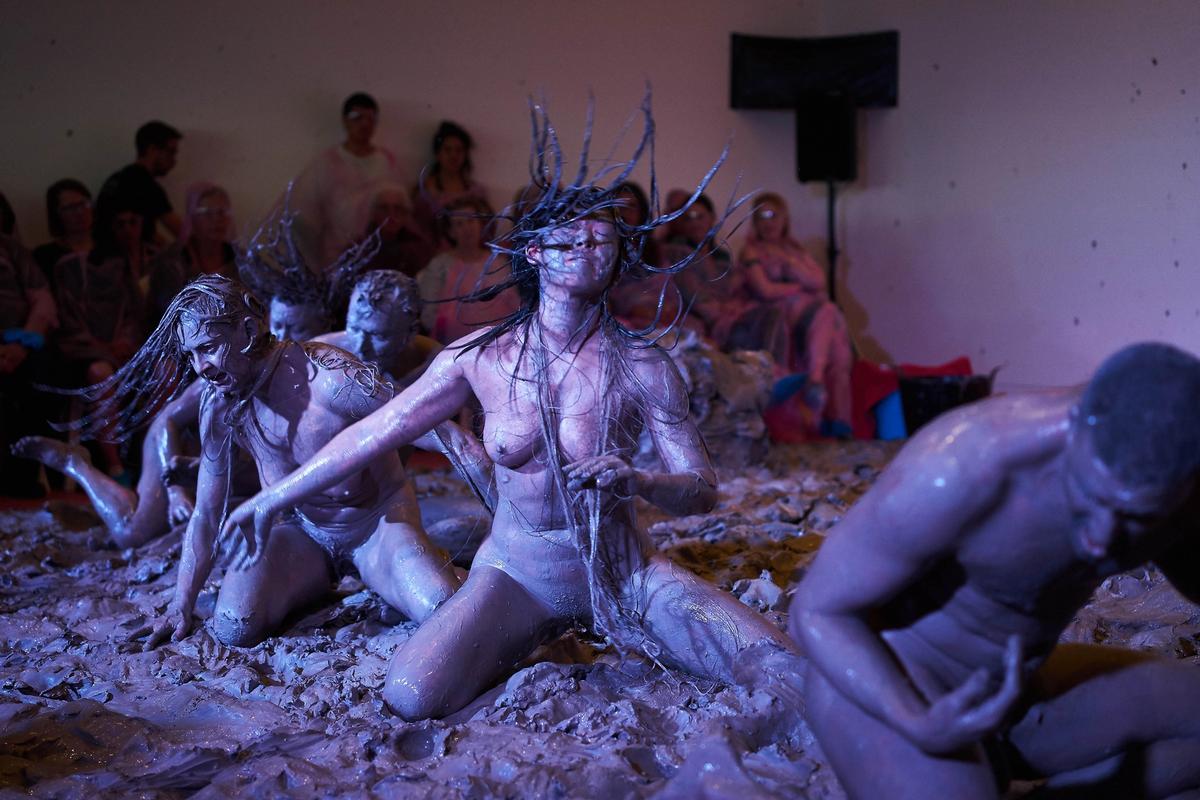When Igor Stravinsky’s The Rite of Spring was first performed by Sergei Diaghilev’s Ballet Russes in May 1913 at the Théâtre de Champs-Élysées in Paris it famously caused a riot. More than a century later, on May bank holiday weekend in Bexhill-on-Sea, South East England, the response to Florence Peake’s revisiting of this key moment in Modernism was rather more restrained. A few nervous sniggers at the sight and sound of five naked dancers energetically activating a landscape made from six tonnes of clay were soon silenced by the physical power and visceral intensity of what was one of the most remarkable events your correspondent has witnessed in a very long time.
To take on one of the most iconic works of the early twentieth century is no mean feat, but with RITE: on this pliant body we slip our WOW! at De La Warr Pavilion, Peake rose to the challenge with a vengeance. What she has described as a “performative sculpture” also turned out to be a multi-media immersive Gestamtkunstwerk, melding movement and material and falling into three distinct phases, the last of which is set to endure throughout the summer.

Florence Peake’s RITE: on this pliant body we slip our WOW! at De La Warr Pavilion Photo: Anne Tetzlaff
First off, there was a three-hour prelude to the scheduled performance in which the dancers, clad in increasingly clay-soiled metallic lamé jumpsuits, laboured with quiet purposefulness to reshape the clay mise-en-scène in anticipation of what was to come. This included fashioning two giant, grotesquely cartoonish troll heads out of the choppy field, and scooping two shallow hollows into its surface. Throughout, the clay was moistened with a regularly pumped mist of lavender water as well as reverberating to the sound of Beatrice Dillon’s atmospheric score, which had been composed out of sampled audio recordings of Peake handling clay whilst listening to Stravinsky.
The main event found this carefully composed environment rapidly disintegrating into a waterlogged swamp, animated and manipulated by the now naked dancers. Some began with heads encased in masks of clay, others started off hidden, buried beneath the surface. Very soon they all became indistinguishable from their surroundings. Flesh merged with clay in a carefully choreographed mayhem of slithering bodies and tangles of limbs. As momentum steadily gathered and more water was pumped, liquefied clay began to be flung in fistfuls at the wall, while an increasingly be-splattered audience cowered in their protective ponchos.

Florence Peake’s RITE: on this pliant body we slip our WOW! at De La Warr Pavilion Photo: Anne Tetzlaff
It was only at this point into the last ten minutes of the piece, that the squelches and thuds of this primal, erotically-charged mud fest gave way to the sound of a slightly scratchy recording of the Sacrificial Dance from The Rite of Spring, played on a real record player. By then, thanks to all that had gone before, the distinctively discordant sound of Stravinsky’s score and the dancer’s frenziedly rhythmic response to it seemed not only appropriate but inevitable. As the music faded and all you could hear was the needle turning and the breathing of the dancers, it became immediately clear that Peake had succeeded in reclaiming the work on her own terms.
Of course the direct experience of Peake’s RITE could only exist in the moment, but its essence has been brilliantly captured in the sculptural installation that opened on Saturday (11 May), which forms the third incarnation and final phase of the work. This will be in situ until 2 September and sees the clay yet again reconfigured from a central square into a curvily-contoured island, populated by towering mounds and punctuated by undulating chunks of fired ceramic sculpture. The whole space is now painted the same vivid pink as the floor and around the walls runs a continuous frieze of twisting figures fashioned in earthy plaster relief. This skein of abstracted, explicitly female bodies in perpetual motion carries both the memory of the writhing clay dancers, as well as the explosive energy of the original Rite. What better way to blast away Little England conservatism and celebrate the rising sap of spring!



